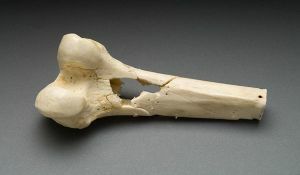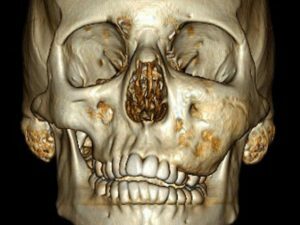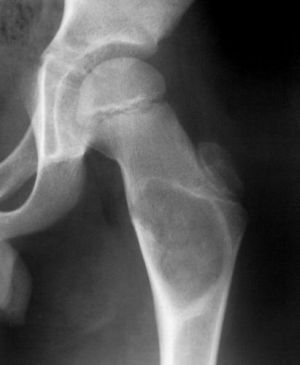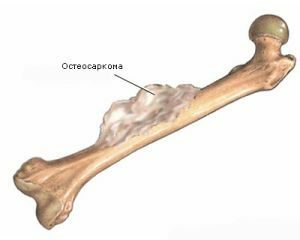 A person can walk, write and control his body at will, thanks to the locomotor apparatus. The skeleton plays an important role in ensuring that the human body is strong and reliable.
A person can walk, write and control his body at will, thanks to the locomotor apparatus. The skeleton plays an important role in ensuring that the human body is strong and reliable.
Therefore, it is so important to know about diseases associated with the bone system.
Contents of the article
- What is fibrotic osteodysplasia?
- Causes of the disease
- Classification of the disease
- Main symptoms
- Therapy options
- Consequences of advanced pathology
What is fibrotic osteodysplasia?
Despite the fact that this is a rare disease, it was studied by scientists from all over the world. Having heard from one doctor the diagnosis - fibrotic osteodysplasia, from another - the disease of Braits-Liechtenstein, from the third - the pathology of Jeffrey-Lichtenstein, you know, they talk about the same disease.
The essence of the pathology is a failure in the formation of bones, caused by a disruption in the development of the epiphyseal plate during the period of bone growth. The ability to transform the osteoblastic mesenchyme into bone tissue is lost.
In patients, bone tissue is transformed into a certain fibrous substance. The simplest bone structures are cardinally altered, they contain cartilaginous inclusions or osteoid substances. An unusual bone with a fibrous bone marrow is formed.
In the affected parts of the skeleton, dense, elastic flesh-shaped formation appears instead of bone tissue. A loose mass, containing instead of a lamellar structure spindle-shaped cells, provokes the presence of peculiar islands of cartilaginous tissue.
In some cases, the presence of individual huge cells such as osteoclasts. Fibrous tissue can migrate from the epiphyseal plate, spread and cause the formation of osteoid tissue, forming a bone with an incomplete type of bone formation.
Causes of
The issue of the origin of fibrous bone dysplasia still raises discussions in medical scientific circles. 
Despite the variety of interpretations, most scientists stick to the theory of the pathogenesis of the disease. Considering it as a congenital malformation of bone tissue.
The most modern and widespread I consider the doctrine of the dysplastic nature of the development of fibrous osteodysplasia, considering the probability of transformation of an underdeveloped bone tissue into a tumor.
Dysfunction of endocrine, central nervous system, or system: pituitary ¬¬- adrenal cortex, as shown by clinical observations, are the main cause of the disease.
Disorders result from the natural, but distorted and extremely slow, pathological development of the embryonic osteoblastic mesenchyme.
Cells lose the ability to transform into normal osteoblasts.
The skeletal ossification process occurring at the time of embryonic formation is extremely abnormal. The child begins to get sick in the womb, during the primary formation of the bone organs, although the symptomatology may not appear immediately after birth.
Classification of the disease
Prognosis and treatment methods largely depend on the number of affected bones.
Four forms of the disease are distinguished according to the number of affected bones:
- Monoossal form of - one bone is affected. It occurs in people of different ages. Especially prone to pathology are the elderly, more common in men than in women.
- The oligossal form of is the defeat of two or three bones. Typically, it affects certain adjacent areas of the skeleton( eg, adjacent ribs or skull bones).
- The polyosseous form of is the defeat of more than three bones. In this case, notice, more often than not, large extraneous changes. Observe also the absence of extra-skeletal lesions.
- Albright Syndrome - bone damage accompanied by skin pigmentation, endocrine disorders. In some cases, girls experience early puberty.
Often, patients do not suspect that they have pathologies. In the initial stage, the disease develops without subjective symptoms or clinical objective signs.
The main symptoms of
The signs of pathology include:
-

On the photo, fibrotic dysplasia of the skull bones
Deformation of bones .The curvature can be barely noticeable or significant( up to the change in the whole segment of the limb).Thickening or lesion of bones depends on how long the disease lasts and its localization. In some cases, this symptom does not accompany painful sensations. In others, it appears with him, or much later.
- Pathological fractures of the .When the bones are consolidated, the degenerative-dystrophic zones of restructuring are formed. Frequent painful sensations. Can be observed with a fractured bone, with intraosseous hemorrhage, which occurs even in the absence of overload.
- Lame .It is caused by a change in the length of the limbs( elongation or shortening).There are pains in the affected area.
- Hormonal disorders of .Landmark or freckled spots of brown color on the skin of the buttocks, neck of the nape, etc. Often observed adenoma of the thyroid gland, hyperthyroidism. For girls - early development of sexual characteristics, premature menstruation. Boys - excessive growth, early voice coarsening, etc.
The scant clinical symptoms make it difficult to diagnose an ailment in the early stages of development. In this case, laboratory tests will not show any deviations, since metabolic processes are not violated.
Fibrous dysplasia of bones is revealed by the results of X-ray examination. In the picture, doctors may notice a zone of diffuse bleaching of bone tissue. Diagnosis should be timely, as well as treatment, as this disease is considered to be pre-tuberous processes.
Therapeutic options for
The treatment of pathological bone formation consists in the application of standard orthopedic measures: strengthening the muscular system, fracture prevention, strengthening the skeleton, etc.
It is recommended to consume a lot of vitamins, regularly hold massages, take sea baths, and perform therapeutic gymnastics.
The operative intervention should be used only with extensive deformations, when drug treatment is not effective.
Prosthesis is prescribed with a pronounced pathology. The delayed access to the doctor provokes the following complications:
- Malignant transformation of - tumors, chondrosarcomas, osteosarcomas, fibrosarcomas.
- Against the backdrop of the disease develops the accompanying pathology - hearing and vision impairment, migraines appear, rachitism develops, heart rhythm is disrupted.
- Giantism and acromegaly is an increased activity of growth hormone.
Forecasts of doctors are often disappointing. Although, in most cases, this is not a fatal disease, but often leads to disability.

Fibrous dysplasia of the tibia
Against the background of frequent fractures, the natural fixation of the skeleton is disrupted, the overall proportion of the structure of the body is disturbed.
At the same time, with single or small foci of fibrous bone dysplasia, the predictions are positive. This is not dangerous and does not represent a threat.
About 5.5% of all bone diseases and 9.5% of benign bone tumors( according to data provided by MV Volkov), the disease nevertheless deserves more attention. Every year more and more children and elderly people are sick to her.
Incorrectly formed bone organs lower the skeletal support function. This anomaly is accompanied not only by deformation of the bone, but also by frequent fractures. With multiple localization, it can lead to disability.



